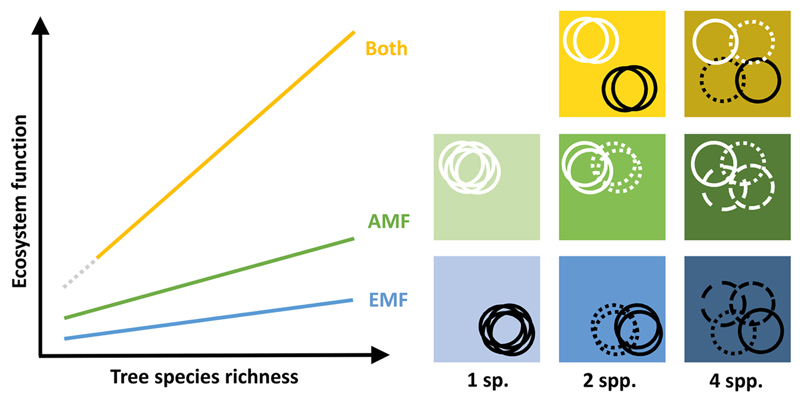Fig. 1.
Conceptual figure illustrating (left) the main hypothesis and (right) the underlying resource use scenarios in tree species that coexist in a community and are limited by a set of resources in MyDiv (modified from Klironomos et al. 2000). We assume that the positive relationship between tree species richness and ecosystem functioning will differ among tree communities. Communities of only arbuscular mycorrhiza-associated tree species (AMF) will have higher ecosystem functioning and show stronger tree diversity effects on ecosystem functioning compared to only ectomycorrhiza-associated tree species (EMF) as indicated by intercept and slope of the graphs, respectively. The soil at the experimental site is nitrogen-rich and presumably phosphorus-limited favoring AMF-tree species performance as AMF are assumed to supply plants more efficiently with phosphorus. Accordingly, the resource space (represented by the colored boxes) occupied by the tree species (represented by circles with different line types; black circles represent EMF-species, white circles represent AMF species) in each community differs as indicated by different positions of the circles within the boxes. We expect that ecosystem functioning will be highest at the highest tree diversity level in tree communities associated with both mycorrhizal types (Both, dark yellow box). In such tree communities, resource use complementarity should be highest as indicated by the lowest level of overlap among circles (low competition for the same resources) and the highest exploitation of the available resource space. This is expected to result in the highest performance of the tree community.

